Exploring Mount Wutai: China’s Majestic Buddhist Mountain Retreat

An Essential Guide to Visiting Mount Wutai
In This Guide
- An Essential Guide to Visiting Mount Wutai
- The Rich History and Legends of Mount Wutai
- Main Highlights: What You Absolutely Can’t Miss
- Planning Your Visit: A Practical Guide
- Tickets: Prices, Booking, and Tips
- How to Get There: A Complete Transportation Guide
- Local Cuisine and Accommodation Nearby
- Frequently Asked Questions
- Final Thoughts on Your Trip
Mount Wutai, or Wǔtái Shān, is a place where spirituality, history, and breathtaking natural beauty converge in a harmonious embrace. Nestled in the Shanxi Province of China, this revered site is one of the Four Sacred Buddhist Mountains and a UNESCO World Heritage Site. For over 1,500 years, it has served as the legendary abode of Manjushri, the Bodhisattva of Wisdom, drawing countless pilgrims and tourists alike to its serene heights.
As you ascend the five majestic peaks that rise like lotus petals from the earth, you’ll discover more than just stunning alpine vistas. Over 50 historic temples dot the landscape, each imbued with rich cultural significance and captivating architecture. From the bustling worshippers at Wuye Temple, seeking blessings for wealth and career, to the tranquil prayer rituals at Shuxiang Temple, where students gather to pray for academic success, each temple offers a unique glimpse into the spiritual lives of those who visit.
Whether you are a cultural enthusiast, a photographer searching for the perfect shot, or a couple seeking a meaningful retreat, Mount Wutai promises an enriching experience. The best time to visit is between May and October when the weather is pleasantly cool, allowing for leisurely exploration of the intricate paths and sacred sites.
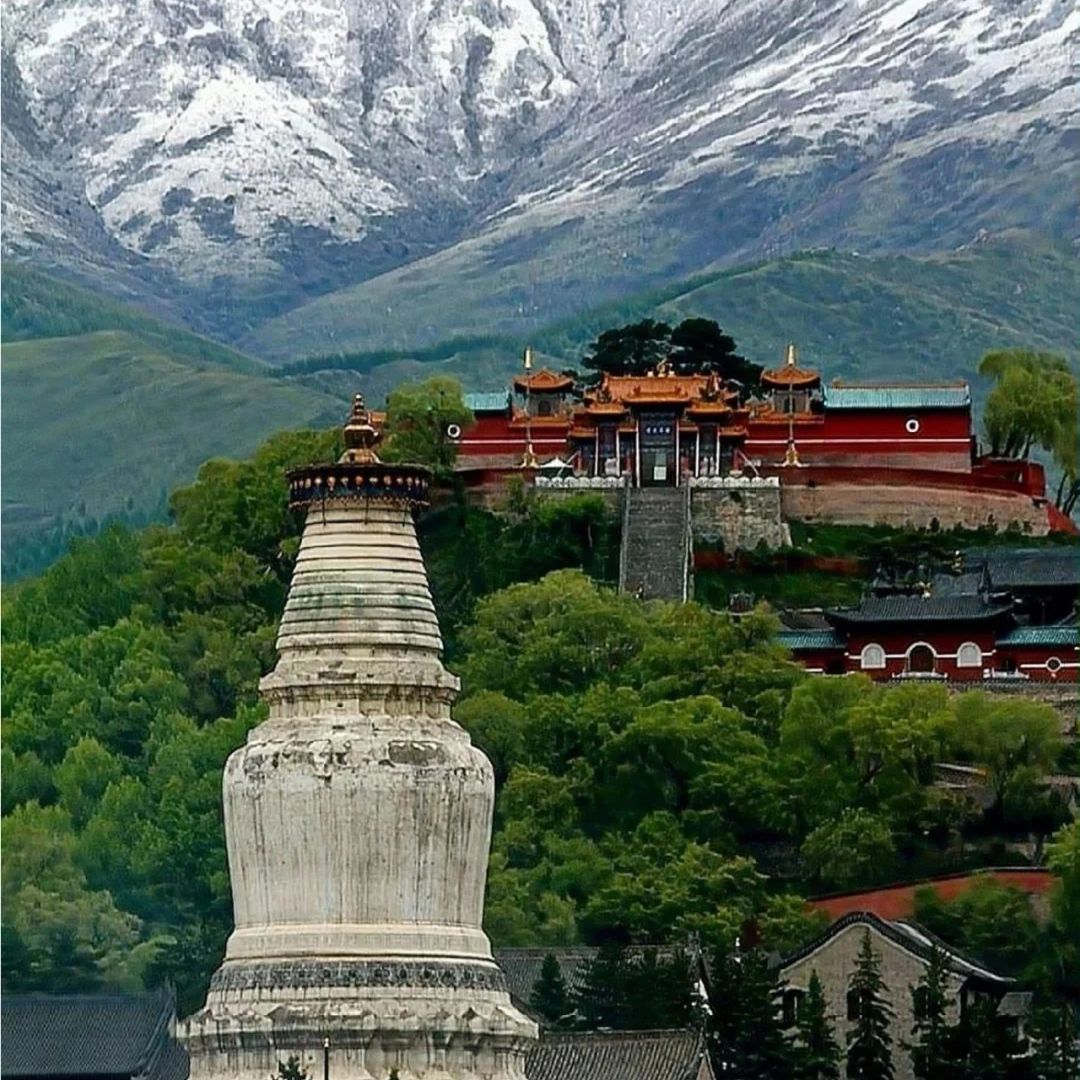
Mount Wutai.
In this guide, we will navigate through the highlights of Mount Wutai, suggest routes for your journey, and equip you with essential travel tips to make the most of your visit. Prepare to embark on a journey that transcends mere sightseeing, as you immerse yourself in the profound history and culture that define this sacred mountain.
The Rich History and Legends of Mount Wutai
Mount Wutai, known as Wǔtái Shān (五台山), stands not only as a stunning natural wonder but also as a profound symbol of spiritual heritage in China. Nestled in the Shanxi Province, this UNESCO World Heritage Site is one of the Four Sacred Buddhist Mountains and has been revered for over 1,500 years. Its rich history and myriad legends are woven into the fabric of Chinese culture, making it a must-visit destination for those seeking both enlightenment and adventure.
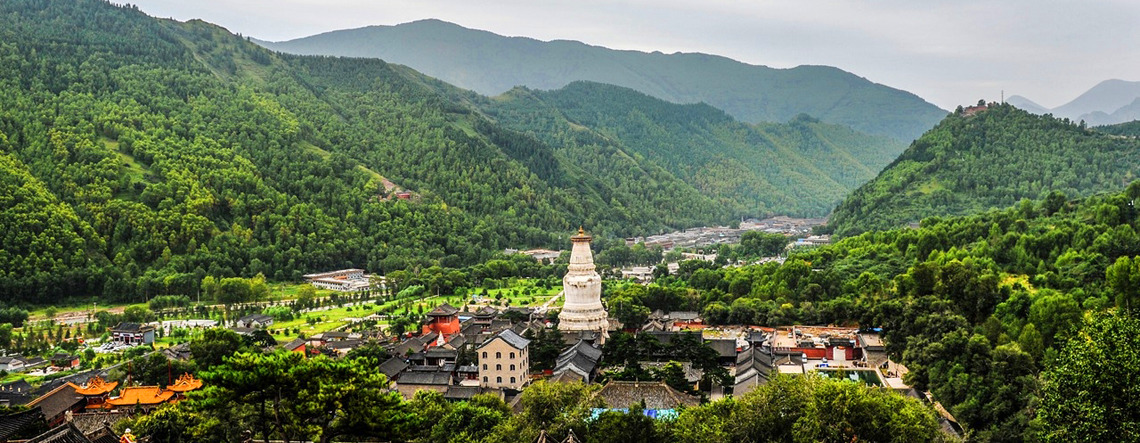
Mount Wutai.
A Historical Tapestry
The history of Mount Wutai dates back to the time of the Northern Wei Dynasty (386–534 AD), when it emerged as a center of Buddhist learning and pilgrimage. Pilgrims flocked to the mountain, drawn by stories of Manjushri, the Bodhisattva of Wisdom, who is believed to have made this sacred place his earthly abode.
Over the centuries, Wutai Mountain transformed into a hub for Buddhist scholars and monks, leading to the construction of more than 50 temples, some of which date back to the Tang and Song Dynasties. The architectural styles of these temples reflect the diverse influences of the eras, showcasing the evolution of Buddhist art and culture in China.

Mount Wutai.
Legends Enshrined in Stone
The legends surrounding Mount Wutai are as captivating as its landscapes. One of the most prominent is the tale of Manjushri, the Bodhisattva of Wisdom. According to Buddhist tradition, Manjushri traveled to Wutai Mountain to meditate and share his wisdom with mortals. Many believe that his spirit still resides here, granting clarity and insight to those who visit the mountain.
Another intriguing legend is that of the Five Terraces, which the mountain is named after. Each of the five peaks is said to represent one of the five elements—earth, water, fire, wind, and space—symbolizing balance and harmony in the universe. It is believed that climbing these peaks helps pilgrims achieve spiritual enlightenment and inner peace.
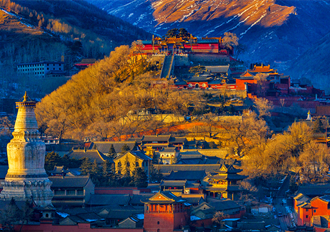
Mount Wutai.
Temples of Significance
-
Xiantong Temple (显通寺): Often referred to as the founding monastery of Wutai Mountain, this temple is steeped in history and architectural diversity. It is said that the temple was once a gathering place for famous Buddhist monks, who would engage in philosophical debates that shaped Buddhist thought.
-
Shuxiang Temple (殊像寺): This temple, dedicated to Manjushri, has become a pilgrimage site for students and academics. The belief is that praying here will enhance one’s wisdom and academic success, making it a beacon for those seeking knowledge.
-
Tayuan Temple (塔院寺): Known for its striking white stupa, Tayuan Temple houses relics believed to be from the Buddha himself. The stupa is a focal point for worshippers, who walk around it in a clockwise direction, symbolizing their respect and devotion.
Spiritual Pilgrimages
Wutai Mountain attracts not only local worshippers but also international tourists seeking spiritual growth. The act of pilgrimage here is imbued with meaning; for many, it represents a journey toward personal clarity and understanding. The climb to the peaks is often seen as a metaphor for overcoming life’s challenges, making each step a powerful act of faith.
A Cultural Legacy
The influence of Mount Wutai extends beyond its spiritual significance. It serves as a cultural crossroads where Buddhism, Taoism, and Confucianism intersect. The temples, with their intricate carvings and vibrant murals, offer a glimpse into the artistic expressions of various dynasties, reflecting the rich tapestry of Chinese civilization.
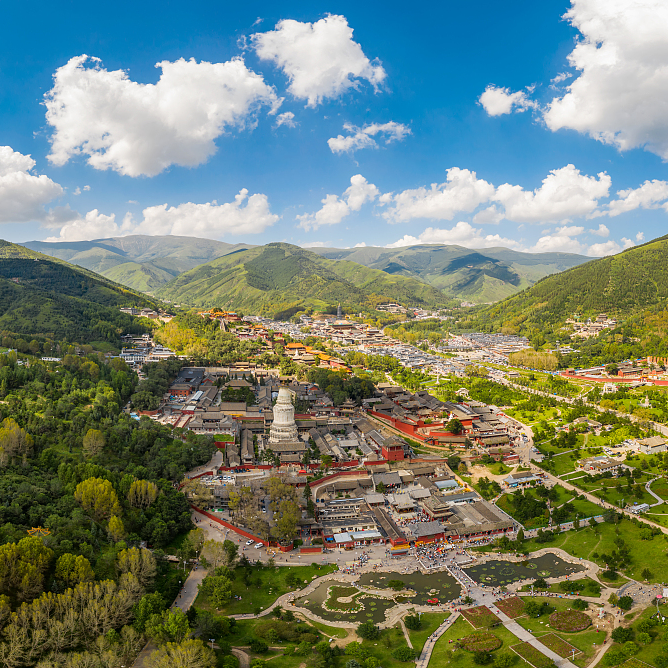
Mount Wutai.
Conclusion
In summary, Mount Wutai is not merely a destination; it is a pilgrimage into the heart of Chinese history and spirituality. Its temples, legends, and breathtaking landscapes invite visitors to explore the depths of their own beliefs while connecting with the wisdom of those who have walked its paths for centuries. Whether you are a devout Buddhist, a history enthusiast, or simply a curious traveler, the stories and experiences that await at Mount Wutai will leave an indelible mark on your journey through China.
Main Highlights: What You Absolutely Can’t Miss
Discover the Essence of Wutai Mountain: Must-See Highlights
Wutai Mountain, a UNESCO World Heritage Site and one of China’s Four Sacred Buddhist Mountains, is a breathtaking destination that merges spiritual significance with stunning natural beauty. With over 50 historic temples nestled among its five peaks, this sacred site attracts pilgrims and travelers from around the world. To ensure you don’t miss the essence of this remarkable place, here’s a detailed guide to its main highlights.
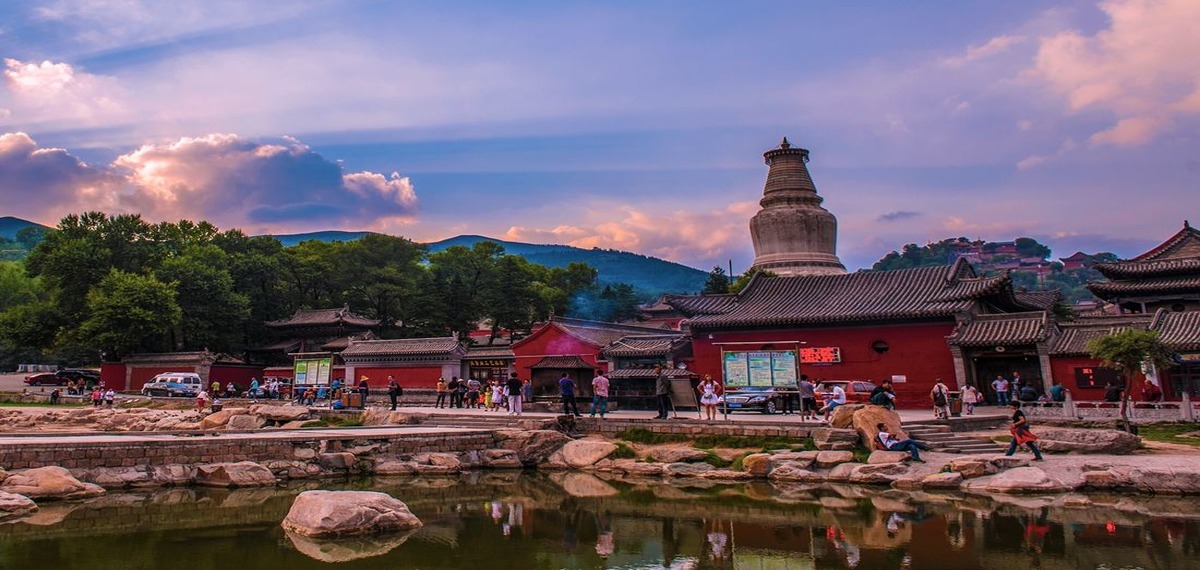
Mount Wutai.
Inner Circle Temples: Heart of the Pilgrimage
- Wuye Temple (五爷庙)
- Why Visit: This vibrant temple is dedicated to Wuye, a local deity revered for bestowing blessings in business and career. Witness the fervent prayers of worshippers who often arrive early to express their devotion.
-
Experience: Feel the energy as visitors line up to kneel before the statue, or simply bow and offer incense from a distance.
-
Shuxiang Temple (殊像寺)
- Why Visit: Known as the temple of wisdom, this site is a favorite among students and intellectuals praying to Manjushri, the Bodhisattva of Wisdom.
-
Experience: Purchase a fruit basket outside as a tribute or use the free incense provided inside to make your wishes.
-
Tayuan Temple (塔院寺)
- Why Visit: Home to the iconic white stupa and sacred relics, Tayuan Temple stands as one of Wutai’s most recognizable landmarks.
-
Experience: Join the devoted pilgrims as they walk clockwise around the stupa, engaged in quiet prayer.
-
Xiantong Temple (显通寺)
- Why Visit: As the founding monastery of Wutai Mountain, it boasts diverse architectural styles and a rich history.
-
Experience: Wander through its many halls, each uniquely designed, and admire the centuries-old craftsmanship.
-
Pusading (菩萨顶)
- Why Visit: A climb to Pusading symbolizes the release of life’s troubles, as you ascend 108 stairs.
-
Experience: Enjoy stunning views over the valley and soak in the spiritual atmosphere that envelops this hilltop temple.
-
Luohou Temple (罗睺寺)
- Why Visit: A hidden gem, this temple features a fascinating mechanism where a wooden lotus flower reveals a Buddha statue.
-
Experience: Marvel at this clever design and contemplate its deeper meanings.
-
Guanghua Temple (广化寺)
- Why Visit: Renowned for its vibrant Tibetan-style architecture, it’s a dream for photographers.
-
Experience: Capture the beauty of the golden roofs and ornate towers, especially the striking Dizang Hall.
-
Dailuoding (黛螺顶)
- Why Visit: Climbing its 1,080 steps is said to be equivalent to visiting all five outer peaks, a significant spiritual shortcut.
-
Experience: Encounter fellow pilgrims as they prostrate along the steps, enhancing the spiritual ambiance.
-
Guangren Temple (广仁寺) / Shifang Hall (十方堂)
- Why Visit: A perfect spot for acquiring meaningful souvenirs, including prayer beads blessed by monks.
-
Experience: Engage in the bustling atmosphere and consider participating in blessings for your purchased items.
-
Fanxian Mountain (梵仙山)
- Why Visit: Dedicated to the fox spirit, this temple is associated with love and destiny, attracting many seeking romance.
- Experience: Enjoy the scenic hike and the mystical ambiance that surrounds this lesser-known temple.
Outer Circle Highlights: Nature and Spirituality Combined
- East Terrace (东台顶)
- Why Visit: Famous for breathtaking sunrise views, it’s the ideal spot to start your day.
-
Experience: Reserve a vehicle to reach Hongmenyan and hike up for unparalleled vistas.
-
Longquan Temple (龙泉寺)
- Why Visit: Known for its intricately carved white marble archway and the famous Dragon Spring, believed to bring good fortune.
-
Experience: Collect the cool, sweet water and admire the detailed carvings that blend various cultural influences.
-
Zhenhai Temple (镇海寺)
- Why Visit: A tranquil temple featuring a unique male-form Guanyin statue, it’s a rare sight that adds intrigue.
-
Experience: Reflect by the peaceful spring and take in the beautifully preserved Qing Dynasty statues.
-
Mingyue Pool (明月池)
- Why Visit: Locals believe this serene pond holds the power to reveal one’s past or future.
- Experience: Join the contemplative visitors and reflect on your own journey.
Conclusion
Visiting Wutai Mountain offers not only a glimpse into China’s rich Buddhist heritage but also an opportunity to connect with nature and spirituality. Whether you’re a pilgrim seeking blessings or a traveler eager to explore cultural wonders, the highlights of this sacred mountain promise an unforgettable experience. Embrace the serene atmosphere, indulge in the breathtaking views, and let the ancient wisdom of Wutai Mountain guide you on your journey.
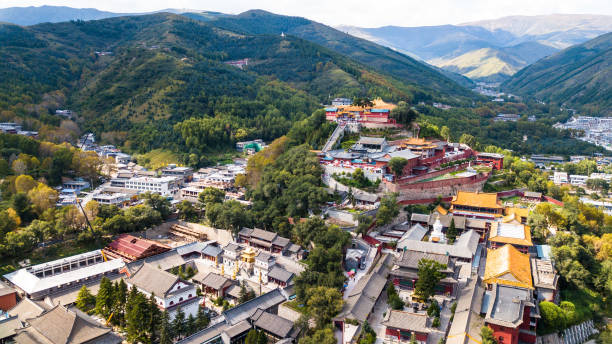
Mount Wutai.
Planning Your Visit: A Practical Guide
Planning Your Visit to Mount Wutai: A Practical Guide
Mount Wutai (五台山) is not just a destination; it’s a spiritual journey interwoven with rich history and breathtaking landscapes. A UNESCO World Heritage Site and one of China’s Four Sacred Buddhist Mountains, Wutai has attracted pilgrims and travelers for over 1,500 years. To help you navigate this sacred site, here’s a comprehensive guide for your visit.
Getting to Mount Wutai
Reaching Mount Wutai can be a bit challenging, as it’s somewhat off the beaten path. Here are your best options:
- By Train: Trains are available from major cities like Beijing, Datong, and Taiyuan. However, most routes will require a transfer, and the journey can take anywhere from 5 to 7 hours.
- By Private Car: For a more convenient option, consider hiring a private car. This avoids the hassle of train transfers and can significantly reduce travel time. For instance, a direct car ride from Datong takes about 3.5 hours, compared to up to 5 hours by train.
- Airport: There is a Wutaishan Airport nearby, but direct flights are limited. From the airport, it takes about 40 minutes by taxi to reach the scenic area.
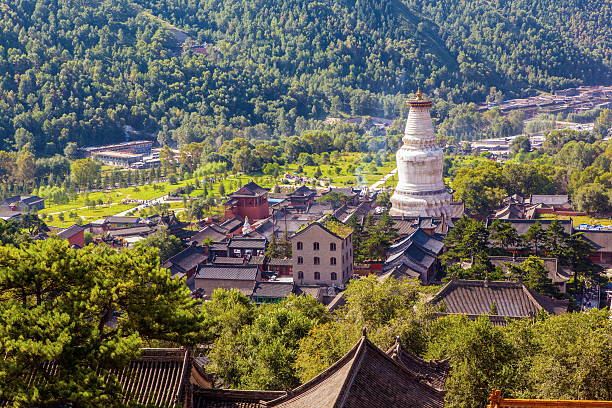
Mount Wutai.
Best Time to Visit
The ideal months to explore Mount Wutai are from May to October. During this period, the climate is mild and pleasant, making it easier to hike, explore temples, and enjoy the stunning natural scenery.
Suggested Itineraries
Whether you have just a day or two to explore, here are suggested itineraries to make the most of your visit.
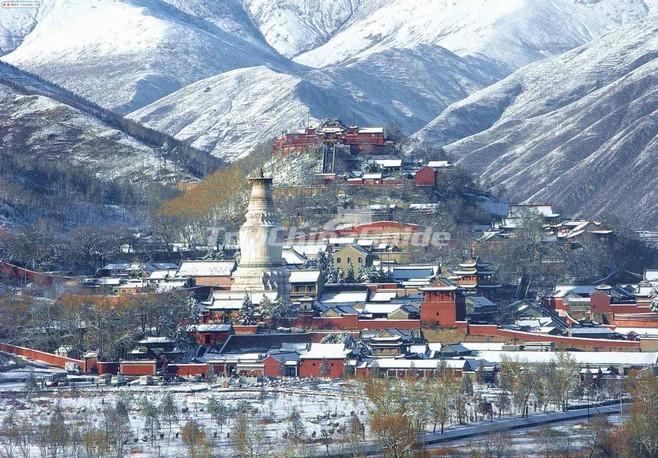
Mount Wutai.
1-Day Classic Route:
- Morning:
- Start at Wuye Temple for wealth and career prayers.
- Visit the iconic Tayuan Temple, home to the famous White Stupa.
- Explore Xiantong Temple, the oldest and grandest monastery.
- Climb the 108 stairs to Pusading for a panoramic view.
-
Stop by Luohou Temple to see the mechanical lotus flower.
-
Afternoon:
- Lunch at Guanghua Temple, known for its stunning architecture.
- Climb Dailuoding (1,080 steps) for a symbolic pilgrimage experience.
- Enjoy a light dinner at Vegetarian Dicos before departing around 6 PM.
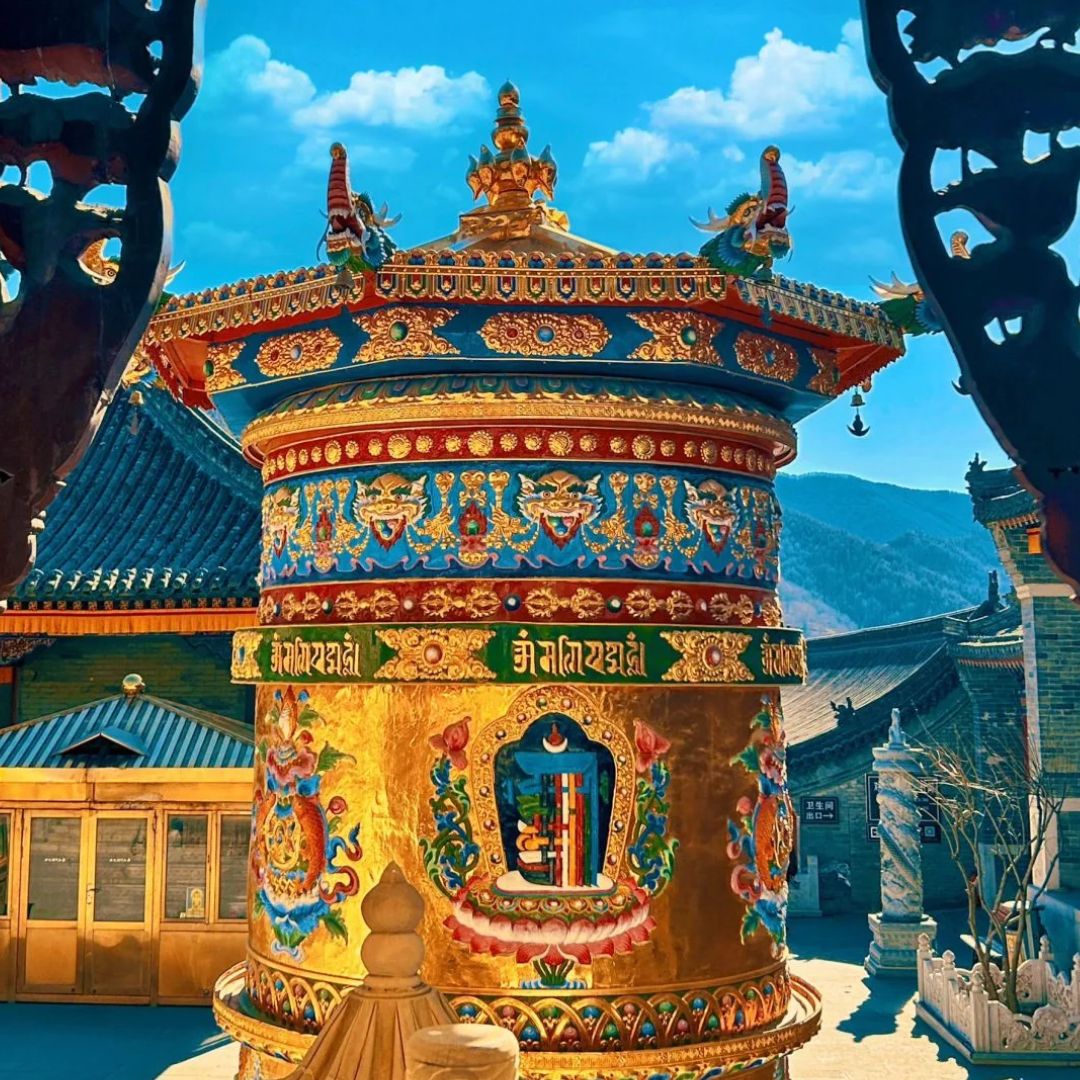
Mount Wutai.
2-Day Extended Experience:
-
Day 1: Follow the classic route and overnight in the Yangbaiyu area for convenience and good-value options.
-
Day 2:
- Rise early to catch the sunrise from East Terrace. Arrange private transportation to Hongmenyan for this.
- Visit Shuxiang Temple, known for its connection to wisdom and academic success.
- If time allows, consider climbing Fanxian Mountain for a spiritual experience.
- In the afternoon, explore outer temples such as Longquan Temple and Mingyue Pool before returning.
Ticket Information
- Entrance Fee: RMB 135 (approximately USD 18 / SGD 24). Note that climbing the five main peaks may incur additional costs.
- Operating Hours: Open all day, though it’s advisable to start early to make the most of your visit.
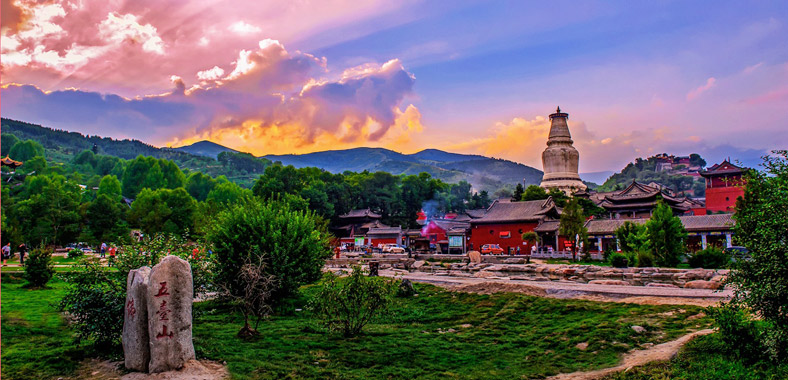
Mount Wutai.
Travel Tips
- Dress Comfortably: Wear sturdy shoes suitable for hiking, and dress in layers as temperatures can vary.
- Stay Hydrated: Bring water, especially if you plan to hike the outer peaks.
- Respect Local Customs: Be mindful of the spiritual atmosphere and local traditions, especially in temples.
- Photography: Don’t miss capturing the vibrant colors and stunning architecture of the temples, but be respectful and avoid taking photos where prohibited.
Conclusion
Mount Wutai is a treasure trove of history, spirituality, and natural beauty. By following this practical guide, you can ensure that your visit is both memorable and enriching. Whether you are a cultural traveler, a photographer, or a spiritual seeker, Wutai Mountain promises an experience that resonates long after your journey ends. Prepare to be captivated by its serene landscapes and profound cultural heritage!

Mount Wutai.
Tickets: Prices, Booking, and Tips
When planning your visit to the majestic Mount Wutai, understanding ticketing and access is crucial to a smooth experience. Here’s everything you need to know about ticket prices, booking options, and some helpful tips to enhance your journey.
Ticket Prices
Visiting Wutai Mountain comes with a reasonable admission fee, which is structured to provide access to its rich cultural and spiritual heritage:
- General Admission: RMB 135 (approximately USD 18 / SGD 24). This ticket grants you access to the core temples and scenic areas within the central valley.
- Climbing the Five Main Peaks: Note that additional fees may apply if you plan to climb the five main peaks of the mountain. Specific rates can vary, so inquire at the entrance or check local resources for the latest updates.
Booking Your Tickets
Purchasing tickets for Wutai Mountain is straightforward. Here are your options:
- On-Site Purchase: Tickets can be bought at the entrance of the scenic area. Be prepared for potential lines, especially during peak travel seasons.
- Online Booking: If you prefer to skip the queue, consider booking your tickets online through various travel platforms or local tourism websites. This can help ensure availability, particularly during busy times.
Tips for a Smooth Experience
To maximize your visit to Wutai Mountain, keep these tips in mind:
-
Plan Your Visit: While a day is sufficient for the main attractions, consider extending your stay to enjoy the sunrise from East Terrace or explore the outer temples for a deeper experience.
-
Early Arrival is Key: For a peaceful visit, particularly to popular spots like Wuye Temple, aim to arrive early in the day. Morning visits also provide cooler temperatures and fewer crowds.
-
Transportation: If you’re not driving, plan your transportation ahead of time. Shuttle buses are available but can have limited schedules, especially early in the morning. Private car transfers can offer more flexibility.
-
Weather Considerations: The best time to visit is from May to October when the weather is cooler and more pleasant. Be sure to check forecasts as conditions can vary.
-
Respect Local Customs: As a site of pilgrimage, it’s essential to be respectful of the traditions and practices observed at the temples. If you wish to participate in rituals, familiarize yourself with the local etiquette.
-
Stay Hydrated and Prepared: Bring water, especially if you plan on hiking the peaks. The elevation can make you feel more fatigued, and staying hydrated is key.
By following these guidelines, you’ll be well-prepared to embark on a meaningful journey to Mount Wutai, immersing yourself in its rich history and spiritual ambiance. Enjoy your adventure!
How to Get There: A Complete Transportation Guide
Getting to Mount Wutai: A Comprehensive Transportation Guide
Mount Wutai, known as Wǔtái Shān in Chinese, is one of the Four Sacred Buddhist Mountains in China, attracting visitors with its rich history and stunning landscapes. However, reaching this spiritual haven can be a bit challenging due to its remote location. Here’s your complete guide to navigating the journey to Wutai Mountain.
By Air
The nearest airport is Wutaishan Airport (WUT), located approximately 15 kilometers from Taihuai Town, the central area of Mount Wutai. Currently, the airport has limited flights, primarily servicing regional routes. For international travelers, the best approach is to fly into major Chinese cities like Beijing or Taiyuan, and then make your way to Wutaishan.
By Train
Traveling by train is another viable option:
-
From Beijing: You can take an overnight train to Datong or Taiyuan. The journey typically takes around 10 to 12 hours. However, keep in mind that overnight trains may not arrive early enough for sunrise viewing at Wutai Mountain.
-
From Datong: Trains from Datong to Wutaishan Railway Station are available, but most routes require a transfer, totaling approximately 5 to 7 hours depending on connections.
-
From Taiyuan: Direct trains run frequently to Wutaishan Railway Station, making this a convenient option.
Once you arrive at Wutaishan Railway Station, the scenic area is about a 40-minute shuttle bus or taxi ride away.
By Bus
Long-distance buses connect Wutai Mountain with several key cities:
-
From Taiyuan: Buses leave regularly from the Taiyuan Long-distance Bus Station to Wutai Mountain. The bus journey takes about 4 to 5 hours.
-
From Datong: Similar services operate from Datong, with the trip lasting approximately 3 to 4 hours.
By Private Car
For a more comfortable and efficient journey, consider hiring a private car. This option is particularly recommended as it eliminates the hassle of train transfers and provides the flexibility to travel at your own pace. Here are some estimated travel times:
-
From Datong: A direct trip takes about 3.5 hours.
-
From Taiyuan: Expect around 4 hours of driving.
This method is ideal for groups or families, as it can also be cost-effective and allows for stops along the way.
Local Transportation
Once you arrive in Taihuai Town, the main access point for Wutai Mountain, local transportation options include:
-
Shuttle Buses: These connect Taihuai to various temples and scenic spots throughout the mountain. However, note that the first bus to the outer areas typically departs around 7 AM.
-
Taxis: Readily available and a great option for reaching specific sites without the wait.
-
Walking: Many visitors prefer to explore the central temple cluster on foot, as most sites are within walking distance.
Tips for Travelers
-
Plan Ahead: Given the limited direct transport options, it’s wise to plan your route ahead of time and confirm schedules, especially for trains and buses.
-
Early Departure: If you aim to catch a sunrise at East Terrace, arrange a private transfer in advance, as public transport won’t be available in the early hours.
-
Peak Season: The best time to visit is from May to October, when the weather is most favorable, but expect larger crowds during these months.
With this guide in hand, you are well-equipped to embark on your journey to Mount Wutai, where spirituality, culture, and breathtaking nature await. Safe travels!
Local Cuisine and Accommodation Nearby
When visiting the serene and spiritually rich landscapes of Mount Wutai, indulging in local cuisine and finding comfortable accommodation can enhance your experience immensely. Here’s a guide to the best dining options and places to stay in the area, ensuring you enjoy both the flavors of Shanxi Province and the convenience of nearby lodgings.
Culinary Delights
Vegetarian Dicos
Located at the foot of Dailuoding, Vegetarian Dicos is a unique fast-food chain that serves a delightful array of meat-free dishes. Travelers will find a comforting selection of vegetarian burgers, rice bowls, and snacks. It’s a perfect pit stop for a light dinner after a day of temple exploration.
Local Eateries in Taihuai Town
In Taihuai, the heart of Wutai Mountain, several local restaurants serve traditional Shanxi dishes. Here are a few to consider:
– Xinglong Vegetarian Restaurant (兴隆素食馆): Known for its authentic vegetarian meals, this eatery offers a tranquil dining atmosphere and a variety of dishes that pay homage to Buddhist dietary practices.
– Wutai Mountain Noodle House (五台山面馆): A cozy spot famous for its hand-pulled noodles and local dumplings. Be sure to try the “Daoxiaomian,” a type of noodle that is a beloved specialty in the region.
– Longquan Temple Restaurant: Located within the temple complex, this vegetarian restaurant serves simple yet delicious meals, often made from fresh local ingredients. Dining here allows you to savor your meal surrounded by the peaceful ambiance of the temple.
Street Snacks
For those who love to explore, the streets around Taihuai are filled with vendors offering local snacks. Try the sweet potato cakes and fried dough twists, both popular choices among pilgrims and travelers alike.
Where to Stay
Yangbaiyu Area
This area is particularly convenient for travelers, with several guesthouses and hotels that provide easy access to the main attractions. Here are a few recommendations:
-
Wutai Mountain Hotel (五台山宾馆): A comfortable and reasonably priced hotel with views of the surrounding mountains. It features amenities such as free Wi-Fi and a restaurant serving local cuisine.
-
Shanxi Wutai Mountain International Youth Hostel (五台山国际青年旅舍): Perfect for budget-conscious travelers, this hostel offers dormitory-style and private rooms. Its friendly atmosphere makes it a great place to meet fellow adventurers.
-
Wutaishan Yujia Guesthouse (五台山玉佳客栈): A charming guesthouse located close to the main temple area. It offers cozy rooms with traditional decor and a lovely courtyard where guests can relax after a day of exploring.
Temple Accommodations
For a truly immersive experience, consider staying at one of the temple guesthouses, such as:
– Tayuan Temple Guesthouse: Offers simple accommodations right next to the iconic white stupa. Staying here allows for a unique experience of morning chants and the spiritual atmosphere of the temple grounds.
Tips for a Comfortable Stay
- Reservation: It’s advisable to book your accommodation in advance, especially during peak seasons from May to October.
- Local Etiquette: When dining at local restaurants, be mindful of Buddhist customs, especially if you’re visiting during religious festivals or special ceremonies.
By savoring the local flavors and finding a cozy place to rest, you can fully immerse yourself in the tranquility and spirituality that Mount Wutai offers. Whether you’re enjoying a meal surrounded by nature or reflecting on your day in a comfortable guesthouse, your experience here will be unforgettable.
Frequently Asked Questions
Frequently Asked Questions About Mount Wutai
1. What is Mount Wutai known for?
Mount Wutai, or 五台山 (Wǔtái Shān), is one of China’s Four Sacred Buddhist Mountains and a UNESCO World Heritage Site. It is renowned as the legendary home of Manjushri, the Bodhisattva of Wisdom, attracting pilgrims for over 1,500 years. The site features more than 50 historic temples set amidst stunning alpine landscapes.
2. How do I get to Mount Wutai?
Reaching Mount Wutai can be a bit complex. While there is a Wutaishan Airport and a nearby railway station, direct connections are limited. The most common approach is to take a train from major cities like Beijing, Datong, or Taiyuan. After reaching Wutaishan Station, a shuttle bus or taxi will take you to the scenic area in about 40 minutes. Alternatively, hiring a private car can save time and hassle.
3. What is the best time to visit?
The ideal months to visit Mount Wutai are from May to October when the weather is cool and pleasant, making it perfect for exploring the temples and hiking the surrounding peaks. During this period, the natural beauty of the mountain is at its peak.
4. How much does it cost to enter the scenic area?
The entrance ticket for Wutai Mountain costs approximately RMB 135 (around USD 18 or SGD 24). Please note that there may be additional fees for climbing the five main peaks, which are not included in the general admission price.
5. How long should I plan to stay?
For most travelers, a one-day visit is sufficient to explore the core highlights of Mount Wutai. However, if you wish to experience the sunrise from East Terrace and visit some outer temples, consider extending your stay to two days.
6. Are there accommodations available nearby?
Yes, there are various accommodation options around Mount Wutai, ranging from guesthouses to hotels. The Yangbaiyu area is particularly convenient, offering good-value lodgings and local restaurants that cater to different budgets.
7. What should I wear when visiting?
Comfortable, layered clothing is recommended, as temperatures can vary significantly throughout the day. Sturdy walking shoes are essential for exploring the temples and hiking the trails. If you plan to visit during the cooler months, be sure to bring a warm jacket.
8. Are there any special customs or practices I should be aware of?
When visiting the temples, it’s important to be respectful and mindful of the local customs. Common practices include bowing and offering incense when praying. Additionally, many visitors choose to offer fruit or other tributes at the temples, especially at Shuxiang Temple, which is dedicated to Manjushri. Remember to maintain a quiet demeanor to honor the sacred atmosphere of the site.
Final Thoughts on Your Trip
As you conclude your journey through the enchanting landscapes and spiritual depths of Mount Wutai, it’s essential to reflect on the myriad experiences that this sacred site offers. From the solemnity of ancient temples to the breathtaking views from the peaks, Wutai Mountain stands as a testament to the rich tapestry of Chinese history and culture.
Embrace the Spiritual Journey
Wutai Mountain is not just a destination; it is a pilgrimage that invites you to engage in a dialogue with the past and present. As you walk among the more than 50 temples, each with its own unique story and significance, take a moment to breathe in the spiritual atmosphere that permeates the air. The rituals you witness, the prayers you hear, and the serene beauty of the surroundings create a profound sense of connection—to the land, to history, and to yourself.
Nature’s Splendor
The natural beauty surrounding Wutai Mountain is equally compelling. The alpine peaks, lush valleys, and tranquil springs provide a stunning backdrop for reflection and rejuvenation. Whether you ascend the heights of the East Terrace to watch the sunrise or wander the peaceful paths of lesser-known temples, the landscape offers a serene escape from the bustle of modern life.
A Cultural Mosaic
Your visit to Wutai Mountain is also an opportunity to immerse yourself in the vibrant cultural practices of the region. Engage with local traditions, partake in rituals, and taste the vegetarian cuisine that reflects the spiritual ethos of Buddhism. Each moment spent here can deepen your understanding of the interwoven threads of faith, history, and everyday life in this ancient land.
Final Reflections
In leaving Wutai Mountain, carry with you not only the memories of striking vistas and sacred spaces but also a renewed sense of clarity and inspiration. Whether you sought wisdom, serenity, or simply an escape into nature, Wutai Mountain has a way of leaving its mark on your spirit. Let the echoes of its teachings resonate within you long after you depart, reminding you of the beauty of connection—to nature, to culture, and to the wisdom of ages past.
As you venture onward, may your journey be enriched by the profound experiences you’ve gathered at this sacred site, inspiring you to seek out the stories and rituals that make our world so beautifully diverse. Safe travels!